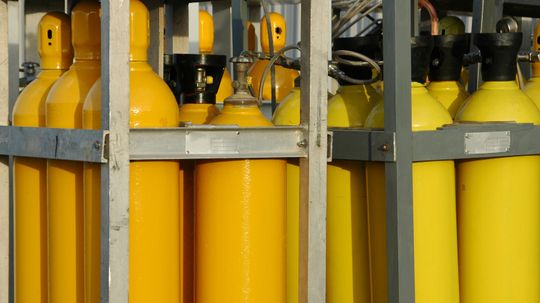Exploring the Hypothetical Scenario of Replacing Atmospheric Air with Pure Oxygen in Car Engines
An Examination of the Ramifications
Considering the hypothetical situation where pure oxygen is introduced into a car engine instead of utilizing atmospheric air, it is imperative to delve into the potential consequences that may arise from such an audacious experiment. This article aims to shed light on this intriguing notion and explore its possible outcomes.
The Impact on Combustion Efficiency
In theory, replacing regular air with pure oxygen might seem like a plausible idea to enhance combustion efficiency within automobile engines. However, one must exercise caution when considering this concept due to several critical factors at play. The introduction of pure oxygen could lead to excessively high temperatures during combustion, potentially causing severe damage to various engine components.
Moreover, by eliminating nitrogen and other inert gases present in atmospheric air, there would be a significant reduction in overall heat capacity within the system. This decrease could result in increased thermal stress on vital engine parts and ultimately compromise their longevity.
Potential Safety Hazards
Beyond concerns related solely to engine performance, introducing pure oxygen poses substantial safety risks that cannot be overlooked. The highly reactive nature of oxygen makes it prone to spontaneous ignition when exposed to flammable substances or even small sparks. Consequently, any fuel leaks or electrical malfunctions within the vehicle’s system could lead to catastrophic accidents if combined with an enriched atmosphere consisting primarily of pure oxygen.
Furthermore, should a collision occur while operating a vehicle fueled by pure oxygen instead of regular air intake systems, there is an elevated risk for more intense fires due to enhanced combustibility properties associated with higher concentrations of this gas.
Emissions and Environmental Impact
While the notion of using pure oxygen in car engines may seem enticing from a performance standpoint, it is essential to consider its environmental implications. The combustion of fossil fuels already contributes significantly to air pollution and climate change. By introducing pure oxygen into the engine, the combustion process would become even more intense, potentially exacerbating these issues.
In addition, this hypothetical scenario fails to address how one would obtain pure oxygen on a large scale for widespread use in vehicles. The production and transportation processes required to supply such quantities of this gas could have their own detrimental effects on the environment.
A Cautionary Conclusion
While contemplating alternative approaches to enhance automobile engine efficiency is commendable, replacing atmospheric air with pure oxygen presents numerous challenges that cannot be ignored. From potential damage to critical engine components and increased safety hazards to intensified emissions and environmental concerns, this hypothetical experiment raises more questions than it answers.
Ultimately, it is crucial for automotive engineers and researchers alike to focus their efforts on developing sustainable solutions that prioritize both performance improvements and environmental preservation rather than pursuing untested concepts with uncertain outcomes.


